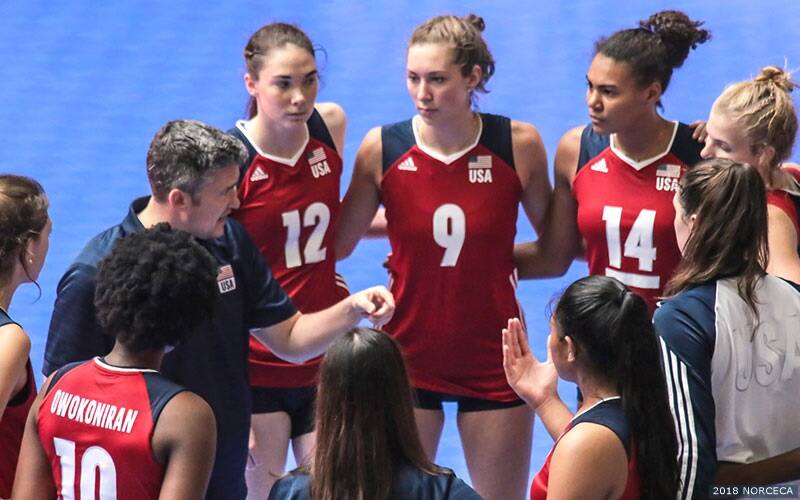
Originally published in VolleyballUSA Fall 2016
Foluke Akinradewo
Two-time U.S. Olympian; silver (2012), bronze (2016); VNL champion (2018)
"When I communicate with coaches, I first like to tell them what my thoughts are on a certain subject, and then I’ll ask how they see it. By doing that, it opens a good line of communication for them to give their feedback. And it allows them to realize that you’re serious about wanting to get better at whatever skill you’re asking about or whatever problem you’re trying to solve."
Kathy DeBoer
Executive director, American Volleyball Coaches Association
"At the AVCA, we spend a lot of time assisting coaches with ways to communicate with players. The fundamental principle is: Talk their language! There’s no reason players can’t turn that strategy around to improve communication with their coaches.
The first step is to figure out what your coach is like. Are they an introvert or an extrovert? Do they love statistics and technical analysis, or do they spend more time on culture and chemistry? Do they change things as soon as there is a problem, or are they consistent and steady in their approach? Do they know your brothers’ and sisters’ names or mostly focus on your kills per set and arm-swing issues? Knowing what’s important to your coach and how they process information is key to having a successful conversation.
If your coach’s style is the opposite of yours, this is much harder because to succeed you have to adapt your approach. You may need to be stoic when you usually demonstrate emotion. You may need to be analytical when it’s more comfortable for you to speak from your heart."
Michael Gervais
Noted sport psychologist, works with U.S. Women’s National Team
"One of the foundations for great communication is to agree on a shared vision and to have clarity on how each of you will respond when the going gets tough. For the first step, it’s up to coaches to generate a clear vision of what’s possible for athletes. Then they can communicate and adjust that vision with the athlete based on the flow of the conversation. Once that’s in place, the foundation for communication (and the relationship) is well on its way to becoming shared vision. Communication from that point is about feedback and adjustments aimed at properly paced progression toward potential.
The next phase of communication is marked by trust-testing. Both coaches and players will have their antenna up to see if the other person is trustworthy and reliable. This is measured during times of stress, tension, pressure, mistakes and loss. Great coaches establish communication standards and strategies well before the team encounters stressful situations.
Good opportunities to build relationships and insights come after training sessions or competitions. Two simple questions help focus discussions on progression rather than on what’s not working. They are: ‘What went well?’ and ‘What do you want to work on?’"
Steve Walker
Head beach volleyball coach, University of Arizona
"As a coaching staff, we spend an abundant amount of time building or enriching our relationships with the players. And one of the many reasons we do that is so we can prompt truthful responses when we ask them direct questions on the court. (Questions might be about what they saw or how they felt in a particular scenario.)
Nowadays, so much of coach-player relationship building takes place in the recruiting process, but I’ve often felt that student-athletes are so measured (and almost choreographed) in their responses throughout this process that the actual relationship building begins on day one of freshman year.
In short, the student-athlete needs to be honest about what they are seeing or how they’re feeling on the court and convey THAT message to the staff, not the message they think we want to hear. We’ve found that will happen if and when the player feels secure with the staff and can speak truthfully, without judgment.";
Laura Kuhn
Head coach, Texas A&M women’s team
"My advice to any player on how to communicate with their coach is to start by being coachable. A player’s attitude and body language are all part of communication. That means listening with intent, training with intent, competing to win on a daily basis. Giving and receiving energy/information is a two-way street. Ask questions and have conversations with your coaches away from the gym."

